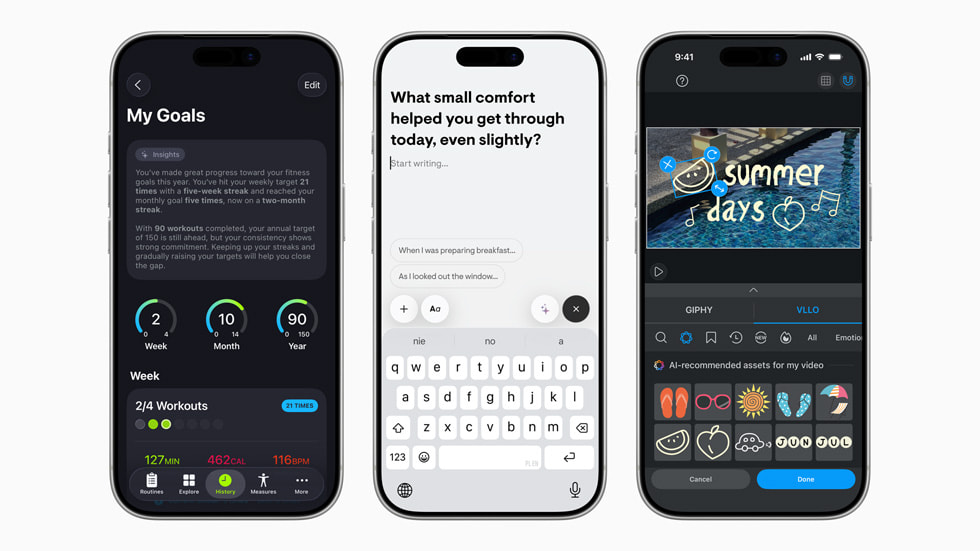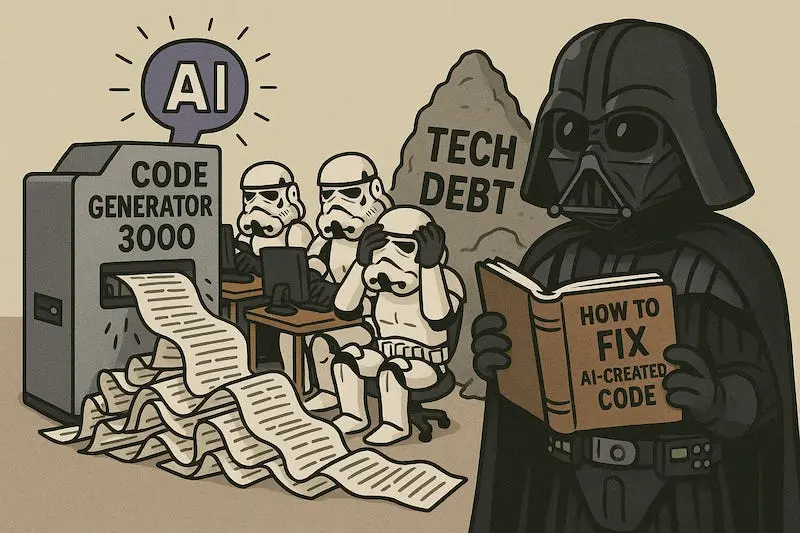
Apple's AI Gambit: Behind on Siri, Ahead on Privacy
While critics mock Siri's lag, Apple's on-device AI strategy might be the smartest long-term play.
Apple has infinite money, controls the hardware AND software, and they’re still getting slapped by a startup people didn’t know existed 3 years ago. This sentiment, echoing across tech forums, cuts to the core of Apple’s current AI predicament. The company that once defined personal technology now finds itself playing catch-up in the AI race, with Siri often feeling less like an intelligent assistant and more like a vintage chatbot.
But dismissing Apple’s position as a simple failure to innovate misses the bigger picture. While competitors rush to cram ever-larger models into the cloud, Apple is executing a fundamentally different strategy, one that prioritizes privacy, on-device processing, and deep ecosystem integration over raw conversational prowess. It’s a high-stakes gamble that could either cement Apple’s premium positioning or relegate it to a footnote in the AI revolution.
The Siri Conundrum: When “Good Enough” Isn’t
Let’s be honest: Siri’s current state is underwhelming. The voice assistant that once captivated us with its debut now struggles with basic contextual understanding and multi-step commands. As one detailed analysis noted, even after Apple’s “intelligence” redesign, Siri remained “super dumb and getting dumber”, redesigned visually without the foundational intelligence to back it up.
The frustration is palpable because Apple’s advantages are undeniable. With control over both silicon and software, Apple should theoretically be able to create a seamlessly integrated AI experience that competitors can only dream of. Yet, when you ask Siri to parse your email history and draft a response referencing three previous conversations, it’s more likely to offer to search the web for “how to write an email.”
This isn’t just a technical problem, it’s a strategic one. Apple’s initial AI features landed with what critics called a “big thud.” Image Playground performed like a generative AI model from three years prior, and notification summaries got the company in hot water with news organizations for factual inaccuracies. Even the much-touted ChatGPT integration often performed worse inside Siri than in the dedicated app.
The Foundation Models Framework: Apple’s Quiet Revolution
While everyone’s been focused on Siri’s shortcomings, Apple has been building something potentially more transformative: the Foundation Models framework. Released with iOS 26, iPadOS 26, and macOS 26, this framework gives developers access to Apple’s on-device large language model, and it’s already changing how apps function.
The key differentiator is that everything happens on your device. No cloud processing, no data sharing with third parties, no subscription fees for developers. As Apple’s VP of Worldwide Developer Relations Susan Prescott stated, developers are creating “expansive and creative” experiences that protect user privacy and work offline.
Consider what this enables in practice:
- SmartGym turns casual workout descriptions into structured routines with sets, reps, and rest times, then explains the reasoning behind each adjustment
- Stoic generates hyper-personalized journaling prompts that adapt to your recent entries and current state of mind
- VLLO analyzes video previews and suggests background music and dynamic stickers tailored to each scene
The founder of Stoic noted that features “once required heavy back-end infrastructure now run natively on device with minimal setup.” For small development teams, this is revolutionary. They can deliver sophisticated AI features without the massive cloud computing costs that typically accompany them.

The Privacy Premium: Apple’s Unconventional Advantage
In the rush to AI dominance, most companies have treated privacy as an afterthought. Your conversations with ChatGPT? Used for training. Your Google Assistant queries? Logged and analyzed. Your Alexa recordings? Stored indefinitely unless you manually delete them.
Apple is betting that a significant portion of the market will pay, literally and figuratively, for privacy. Their Private Cloud Compute approach extends iPhone security into the cloud, ensuring data is never stored or shared with Apple. Independent experts can inspect the code running on Apple silicon servers to verify this privacy promise.
This isn’t just marketing fluff. When Live Translation was introduced, Apple emphasized that it processes conversations on-device, so “personal conversations stay personal.” The same applies to Workout Buddy, which analyzes your fitness data to deliver personalized motivation without sending that intimate information to the cloud.
The question is whether privacy alone can command a premium in an AI world where free, powerful alternatives exist. So far, Apple’s bet has paid off, their ecosystem lock-in combined with privacy concerns has kept users loyal despite Siri’s limitations. But as competing AI assistants become more sophisticated, will that loyalty hold?
The Hybrid Approach: Pragmatism Over Purity
What’s interesting about Apple’s strategy is that it’s not purely isolationist. While they’re building their own models, they’re also pragmatically integrating third-party AI when it makes sense. The new Image Playground allows users to tap into ChatGPT for styles like Watercolor and Oil Painting, while Visual Intelligence lets users ask ChatGPT questions about anything they’re viewing onscreen.
This hybrid approach acknowledges that Apple can’t be the best at everything. Rather than trying to build a perfect all-purpose model, they’re focusing on what they do best, hardware integration and privacy, while partnering for specialized capabilities. It’s a more sustainable strategy than trying to out-innovate dedicated AI companies at their own game.
The same thinking applies to Siri’s future development. Reports suggest Apple has restructured its AI teams and is testing multiple approaches, potentially using in-house models for some functions and third-party models for others. This isn’t admitting defeat, it’s being smart about resource allocation.

The Developer Ecosystem: Apple’s Secret Weapon
Where Apple’s strategy really shines is in its developer ecosystem. By making AI capabilities accessible through familiar frameworks like Swift, they’re enabling thousands of developers to build intelligent features without becoming machine learning experts.
The results are already impressive. Streaks now intelligently categorizes tasks in your to-do list. CARROT Weather provides unlimited conversation around weather insights in its signature sarcastic tone. Detail: AI Video Editor generates teleprompter scripts from outlines. These aren’t just incremental improvements, they represent fundamental changes in how apps function.
Crucially, these features work offline and don’t require users to pay additional subscription fees for AI processing. For developers, this removes the massive barrier of cloud computing costs that typically accompanies advanced AI features. For users, it means a consistent experience regardless of internet connectivity.
The Road Ahead: Challenges and Opportunities
Apple’s AI strategy faces significant headwinds. The company’s deliberate, privacy-first approach means they’ll likely always trail in raw conversational ability compared to cloud-first competitors. Siri’s fundamental limitations remain a problem, especially as users become accustomed to more capable assistants from Google, Amazon, and OpenAI.
However, Apple’s advantages shouldn’t be underestimated. Their control over the entire technology stack, from silicon to software to services, gives them integration capabilities that others can’t match. As AI becomes more embedded in our daily lives, the ability to process sensitive data locally while maintaining context across devices could become a killer feature.
The recent rollout of features like Live Translation, working across Messages, FaceTime, and Phone, demonstrates how Apple’s ecosystem approach can create experiences that feel more integrated than standalone apps. When you can press both AirPod stems to start a translation during an in-person conversation, that’s the kind of seamless experience that builds loyalty.

The Bottom Line: Different, Not Deficient
Apple’s AI strategy isn’t about building the biggest model or the most talkative assistant. It’s about creating intelligent experiences that respect user privacy while leveraging the company’s unique hardware and software integration.
Are they behind in some areas? Absolutely. Siri’s limitations are real and frustrating. But dismissing Apple’s entire AI approach because of Siri’s shortcomings misses the more important story happening behind the scenes. The Foundation Models framework, the emphasis on on-device processing, and the developer tools are quietly building a different kind of AI future, one where intelligence is distributed across devices rather than centralized in the cloud.
For users who prioritize privacy and seamless integration, Apple’s approach might ultimately prove more valuable than raw conversational ability. For the company, it’s a bet that differentiation beats direct competition in the long run.
In a world where everyone is racing to build bigger, more powerful AI models, Apple is quietly building something potentially more sustainable: an AI ecosystem that respects user privacy, works offline, and leverages the company’s unique control over the entire technology stack. It might not be the flashiest strategy, but it could be the smartest one.



